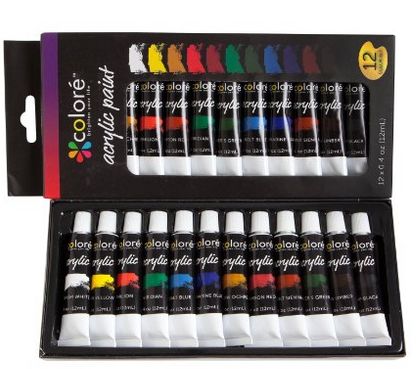Remember once you were in grade school and painting seemed so simple when your teacher just handed you art supplies and helped wash brushes afterwards? Approaching the medium like a more aged artist, you have to find out about paintbrush materials and how to properly look after your brushes.

First, you need to decide regardless of whether you will need soft or stiff hairs for the paintbrush. Either can be generated of natural hairs or synthetic fibers. A skinny paintbrush is ideal when you need to complete detailed work or precise painting. It helps that you spread paint easily. Hard bristles on the other hand be more effective for manipulating thick paint. Each day create brush marks from the paint which can be seen about the canvas. Vincent van Gogh’s work is famous for this technique, as evidenced by his painting The Starry Night.
Most purists will say that natural hair will almost always be finer quality than synthetic fiber for the flexibility and strength. Your hair for paintbrushes comes from animals including Sable, squirrel, hog, camel, ox, pony and goat. When the looked at using hair from one of the animals making you squeamish or else you have ideological difficulty with this, don’t fear: modern painting canvas have fallen quite a distance and so are much less expensive than their natural hair counterparts.
The next thing is to find out somewhat about paintbrush anatomy. The handle is normally created from wood and is called the ferrule. This supports the hairs or bristles. The tip in the bristles is known as the toe.
When deciding which paintbrush to use it is essential to learn how big the brush. This is often based on investigating various on the side of the handle. The littlest dimension is 00 accompanied by 0, 1, 2 and so on. In case you are buying online you should visit a picture of the brush you’re purchasing. Two brushes sized precisely the same can certainly be completely different as a result of variety of bristles along with the width with the handle. This concern can be alleviated if you shop in an actual store or are actually familiar with the company of brush.
It requires a lot of time and your money to get the right paintbrush, so it makes sense to manage them, which include proper cleaning after each use.
Before starting, ensure you have soap (or turpentine if appropriate) plus some tissue. You’ll need lukewarm water and a spot to dry your brushes.
Wipe off of the excess paint using a soft cloth or tissue. Then, rinse your brushes in turpentine if you utilize oils, but use lukewarm water in case you are paint is water-based. Hot water may cause the hairs of your brush to drop out. Afterwards, gently wash your brushes with gentle soap. Repeat all over again as frequently as necessary until no color happens as well as your brush returns to its original color. Next rinse your paintbrush in clean water. Be sure you remove the excess water following this. When the brushes seem misshapen, make use of your fingers to gently bring the comb head back to the original shape.
You now will be ready to dry the paintbrushes. Wrap the bristles in tissue or make-up when they’re wet. If the bristles dry they will contract in this way and definately will maintain their shape. Allow the brushes dry at 70 degrees. Do not rest them on their head because this is another potential hazard to maintaining appropriate shape.
For more information about acrylic paint go to this useful site: look at here
